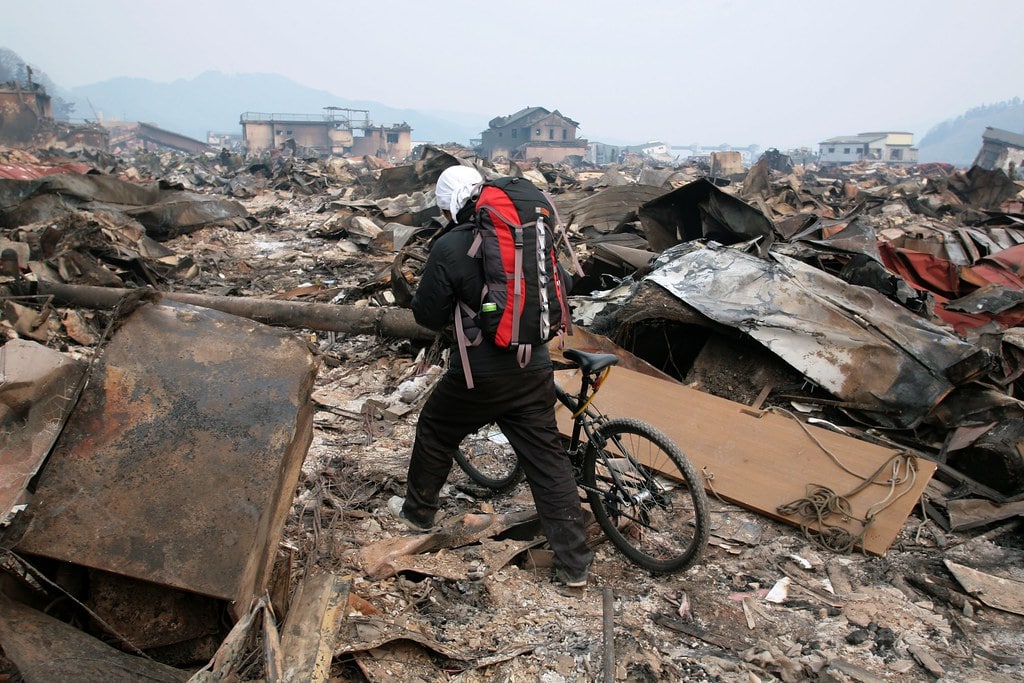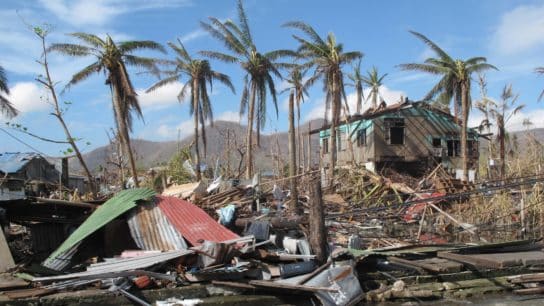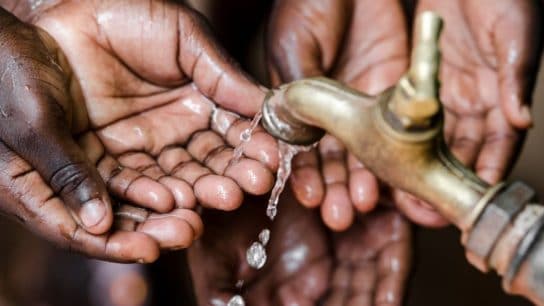Early warning systems for natural hazards are crucial for minimising the impact of disasters. Despite the gains from digitalisation in increasing their accessibility, their effectiveness hinges on more than just technology. To truly save lives, these systems must account for human biases, tailor communication to local contexts, and build trust with communities to ensure warnings translate into action.
—
The start of this year’s Atlantic hurricane season was marked by Beryl, a seemingly mild tropical storm that turned into a Category 3 hurricane in less than 48 hours. This rapid transition made her the earliest major hurricane to form east of the Lesser Antilles on record. On July 1, it established another record for the earliest Category 4 hurricane in history. A few hours later it intensified further, becoming the earliest Category 5 hurricane in the last century.
With the world set to face 1.5 environmental disasters a day (or 560 per year) by 2030, the rapid developments in our climate call for equally agile tools that can aid society in improving its disaster preparedness and response capabilities. In light of this pressing need, early warning systems (EWS) have emerged as a critical solution that is being increasingly adopted around the world as a means of mitigating the devastating impacts of natural and man-made disasters. These disaster prediction information tools can be used across various types of extreme weather events such as floods, heatwaves, tsunamis, and tropical cyclones.
Though the alert itself might be considered the most important component of EWS, timely and accurate warnings are just one part of an effective system. Experts highlight that for an early warning system to be truly effective, it must be underpinned by four key elements: risk knowledge, monitoring and warning services, dissemination and communication, and response capability. Simply put, it is not enough to just detect the hazards, we must also ensure that the warnings are received by the right people, that they understand the urgency of the situation, and that they have the means and willingness to take appropriate action.
Digitalisation Can Be a Key Enabler
Digital technologies and data-driven approaches have emerged as crucial enablers in strengthening the effectiveness of early warning systems. To enhance the accuracy and timeliness of hazard detection, EWS are turning to advances in weather modelling, satellite imagery, social media monitoring, and crowdsourcing that can gather real-time data from the field.
In addition to improved hazard detection, digital technologies can help us reach remote areas and provide much-needed coverage in disaster-prone areas. For instance, a 2020 study highlights how mobile messaging platforms and social media enable faster dissemination of alerts and warnings to a wider audience, including those in inaccessible regions or geographic areas where communication infrastructure may be lacking or data for advanced weather modelling might not be available.
However, despite increasing numbers of countries reporting the existence of multi-hazard early warning systems (101 countries as of March 2023, double the amount reported in 2015), NGO officials have pointed out that one-third of the world’s people, mainly in least developed countries and small island developing states, are still not covered by early warning systems. This is particularly important because reports have found that countries with limited early warning coverage can have an eight times higher disaster mortality than countries with substantial to comprehensive coverage.
To that end, the United Nations Office for Disaster Risk Reduction (UNDRR) and the World Meteorological Organization (WMO) have set ambitious global goals to achieve universal coverage of early warning systems by the end of 2027 through their Early Warnings for All initiative.
The initiative consists of four pillars: disaster risk knowledge; detection and monitoring; preparedness and response; and communication and dissemination. These pillars aim to accelerate the development and implementation of effective multi-hazard early warning systems globally.
Nonetheless, despite multi-sectorial efforts and technological advances, the ultimate effectiveness of these systems is heavily dependent on the ability to communicate the risk in a clear, actionable, and trusted manner, and to motivate the intended recipients to take the appropriate protective measures.
Accounting For Human Biases and Risk Perception
Unfortunately, early warnings do not always translate into an appropriate response from all individuals at risk. Studies have shown that the utility of early warning systems remains limited due to inherent biases, perceptions, and beliefs of the intended recipients.
One of the key factors that can undermine the impact of early warnings is optimistic bias – the tendency for people to believe that they are less likely to experience a negative event than others. This means that individuals may downplay or disregard the risk information provided to them, believing that the threat will not materialise or that they will not be affected.
For instance, hurricane warning systems traditionally rely on showing the public a set of potential paths within a set of boundaries called the “cone of uncertainty.” Research has shown that this visualisation can often lead to people misinterpreting the actual risk and likelihood of a hurricane making landfall in their specific location. As a consequence, they downplay the need to take preventive measures such as securing their property, gathering first aid supplies or seeking shelter.
Case in point, on 2 July, 2024, while Hurricane Beryl’s effects were hitting the coast of Puerto Rico, a video went viral on social media platforms showing a fisherman from Naguabo attempting to go against the storm surge to save his boat. Despite his efforts, the fisherman’s embarkation was overturned by the powerful waves and other fishermen in the area helped him get safely out of the water. Residents later confirmed to local news that all of the other fishermen who regularly use the pier had secured their boats the night before.

This example demonstrates the disconnect that can occur between the perceived risk and the actual threat, and how optimistic bias can lead people to make poor decisions when faced with an imminent disaster.
The challenge for EWS designers is therefore not only to provide accurate and timely warnings, but also to ensure that the information is framed in a way that resonates with people’s risk perceptions and motivates them to take appropriate action.
You might also like: Extreme Weather 101: Your Guide to Staying Prepared and Informed
Designing For Human-Centred EWS
To be effective, early warning systems for natural hazards need to have not only a sound scientific and technical basis but also a strong focus on the people exposed to risk and their ability to respond. The fundamental purpose of early warning systems is to provide timely alerts to communities at risk, allowing them to take protective action and minimise loss of life and property. But, as we have established here, sending warning messages to the community at risk is not the last action in an EWS. Communication is established when people receive, understand the message, and make timely decisions.
Effective early warning systems therefore need to go beyond the technological and scientific components and also consider human behavioural factors to maximise their impact. A best practice for their implementation is to combine their deployment with awareness-raising campaigns, tailoring communication to the local context, and promoting community-based preparations and evacuation planning. This implies that the EWS is people-centred and the community has actively participated during the design and deployment phases.

Finally, it is important to assess EWS’ effectiveness after its implementation. Surveys that integrate measures of satisfaction such as the degree to which the warning provided habitants with the information they needed, whether they understood the expected impact of the hazard, and whether they took the recommended protective actions, can provide critical feedback to system designers. Other important data, such as the number of lives and injuries avoided by the warning, the amount of damage saved by the warning, and the ratio of the assessed benefits and costs of providing a warning system, can also produce robust evidence on the real impact and utility of the EWS.
Ultimately, while the development of early warning systems has made significant strides in the last decade, their true success lies in their ability to effectively communicate risks and compel the intended recipients to take appropriate action. Combining these systems with insights from the social sciences and community engagement will be crucial to overcoming the barriers posed by human biases and perceptions, and building the foundations for climate-ready regions in the face of natural hazards. Although material losses cannot be avoided in some situations, as seen in the case of the Naguabo fisherman, life remains the utmost priority that these systems aim to preserve.
This story is funded by readers like you
Our non-profit newsroom provides climate coverage free of charge and advertising. Your one-off or monthly donations play a crucial role in supporting our operations, expanding our reach, and maintaining our editorial independence.
About EO | Mission Statement | Impact & Reach | Write for us














